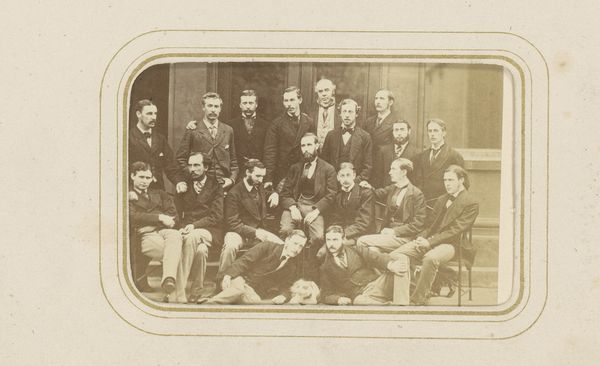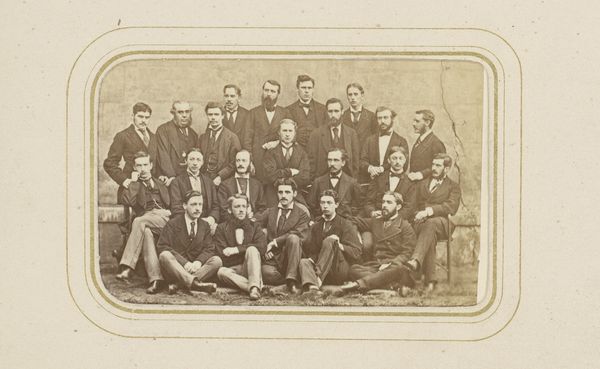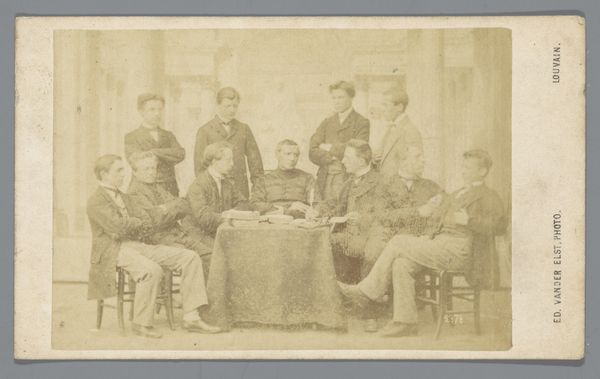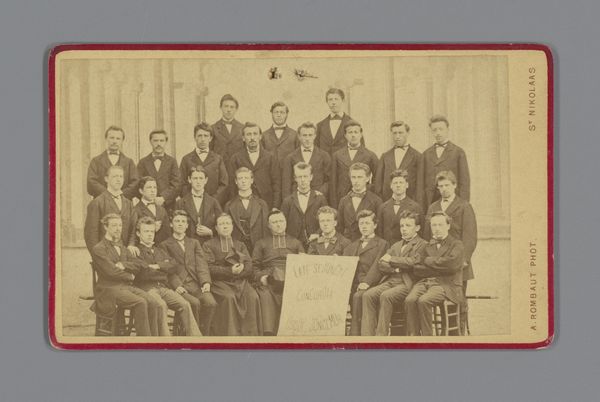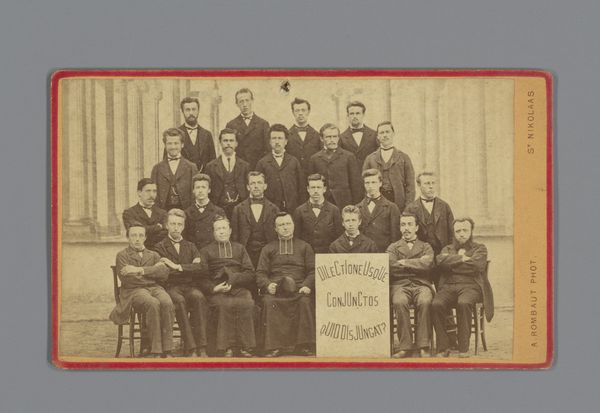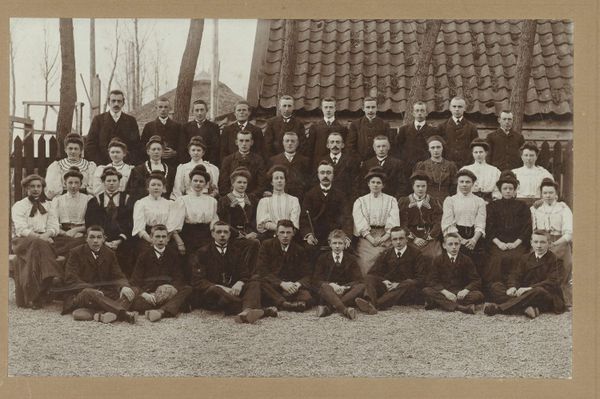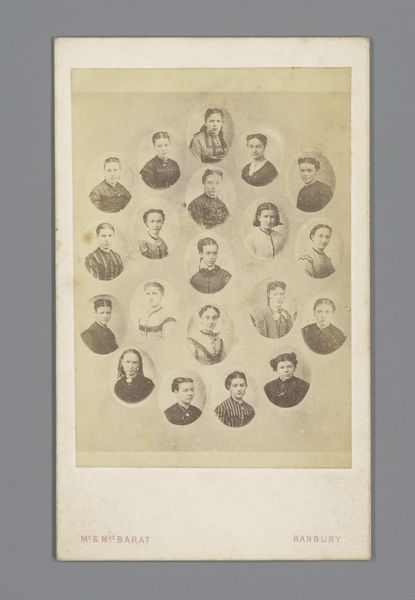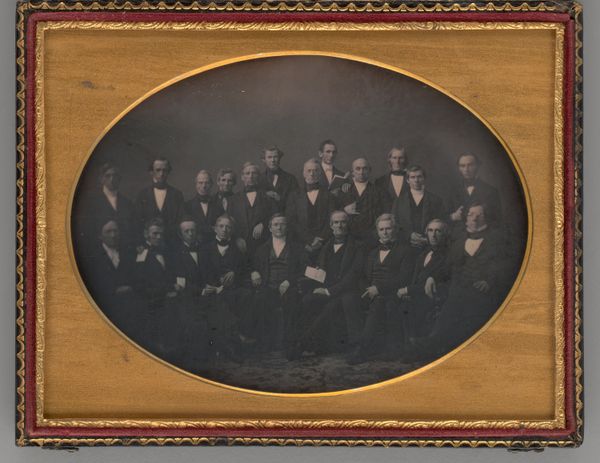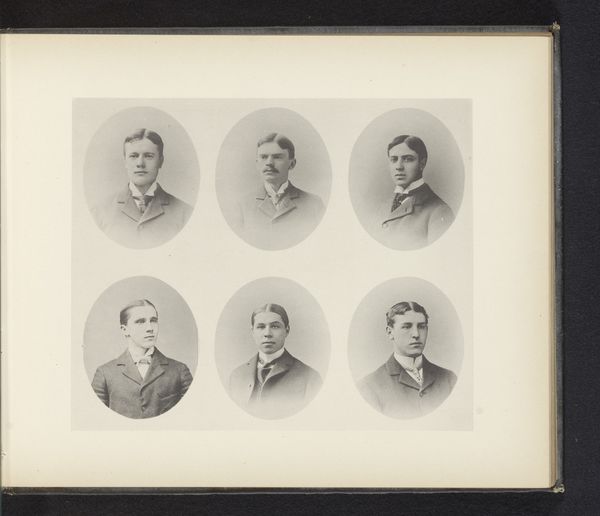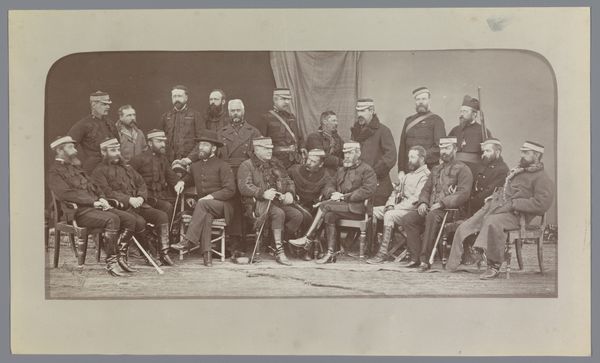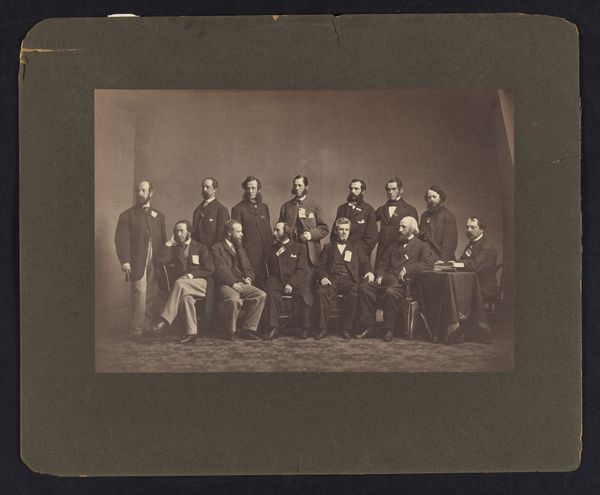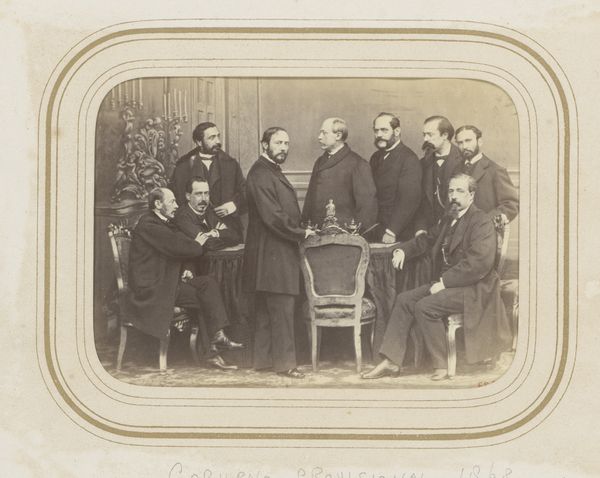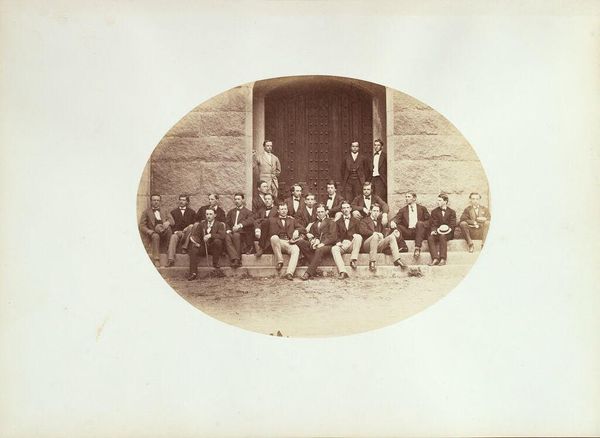
photography
#
portrait
#
photography
#
group-portraits
Dimensions: height 84 mm, width 53 mm
Copyright: Rijks Museum: Open Domain
This photograph of twenty-six men was made by Hills & Saunders using the wet collodion process. This complex technique involved coating a glass plate with a mixture of chemicals, exposing it in the camera while still wet, and then quickly developing the image. Looking at the sepia tones and soft focus, we can imagine the specific conditions and labor involved. The photographer had to be skilled in chemistry, timing, and lighting, and collaborate closely with the sitters to hold still during the exposure. The final print, mounted on card stock, was a precious commodity. Group portraits like these became popular in the 19th century, fueled by the rise of photography as a commercial industry. They offer a fascinating glimpse into the social dynamics of the time, capturing not just individual likenesses but also the collective identity of groups like clubs, associations, and even graduating classes. The material qualities of the photograph itself—the texture of the paper, the delicate tones—are essential to understanding its historical and cultural value. By considering both process and context, we can appreciate photography as both art and document.
Comments
No comments
Be the first to comment and join the conversation on the ultimate creative platform.
